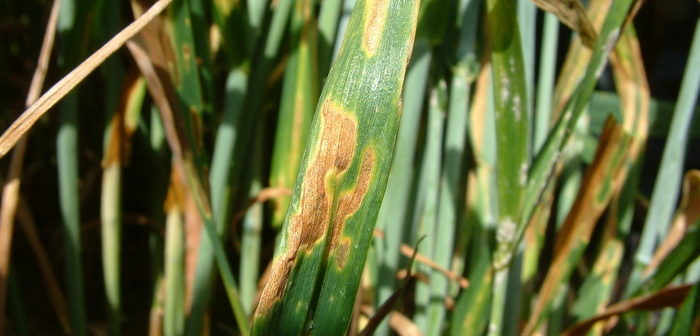Reduced Septoria tritici resistance ratings among winter wheat varieties on the 2022/23 AHDB Recommended List (RL) compared with 2021/22 means extra care is needed with the disease this spring, says Syngenta crop disease specialist, David Ranner.
According to Mr Ranner, a significant number of winter wheat varieties common to the 2022/23 and 2021/22 RLs have seen their one-year S. tritici resistance ratings on the 2022/23 RL fall by over half a point from their three-year ratings on the 2021/22 RL, following last season’s late epidemic. And around a sixth have fallen by more than one point on the 1-9 scale, he explains.
“Varietal resistance provides a first line of defence against disease,” says Mr Ranner. “Septoria tritici can reduce yield up to 50%. Where crops are at greater risk, I would urge growers to have a proactive management plan in place.” To help, he suggests a five-point checklist:
Factor in drilling date and location
As well as checking a variety’s latest S. tritici resistance rating, take account of its drilling date when assessing risk, says Mr Ranner. S. tritici levels can be much higher in September-drilled wheat than October-drilled, he notes, and certainly some crops were drilled early last autumn as growers took advantage of the dry September.
“Clearly, the weather also plays a huge role in how S. tritici develops, so later drilling won’t eliminate risk, but earlier drilling allows it longer to build up over winter. Thicker crops from earlier drilling also encourage its spread between leaves via rain splash. In wetter areas – like the West or North – growers need to be particularly careful with less resistant varieties,” he adds.
Prevent rather than cure
With difficulties curing S.tritici once established, it will be particularly important to adopt a ‘keep it out’ approach to control, says Mr Ranner, with fungicides generally working better when applied preventatively.
He says: “Historic glasshouse research by ADAS for Syngenta comparing SDHI + azole fungicides showed much better S. tritici control with treatments applied preventatively, seven days before leaves were infected, than curatively, seven days after. This was still evident seven weeks after application, with the greatest preventative control of the experiment’s S. tritici population coming from Elatus Era.
“With good grain prices and the top three leaves in winter wheat contributing three quarters of the final yield, there’s a strong case for a long-lasting fungicide, such as Elatus Era, at the important T1 timing to start protecting these leaves.”
Recognise the value of a T0
With heightened risks, do not overlook the benefit of a T0 fungicide, typically applied in March, to suppress infection that has come through the winter, says Mr Ranner.
“Reducing early disease pressure with a T0 also increases the likelihood that the T1 fungicide will be applied preventatively for better results.”
Maintain correct fungicide timings and doses
A variety that is less able to resist infection requires well-timed fungicides to stay on top of disease, says Mr Ranner, and potentially higher fungicide doses.
“Monitor crop growth stages carefully. This isn’t only to guard against fungicides being applied too late after infection has built up, it’s also to ensure the correct leaf is being targeted. At T1, there’s no substitute for dissecting the plant and counting the number of leaves yet to emerge to check you are indeed treating leaf three.”
Build in multi-site protection
With heightened disease risks, do not neglect the benefits of including a proven multi-site fungicide in the programme to target S. tritici at multiple points in its metabolism, says Mr Ranner.
“As well as providing a different mode of action to protect single-site fungicides against resistance, adding the multi-site folpet to a range of other fungicides in trial plots in 2021 was shown to both improve Septoria control and increase yield.”




